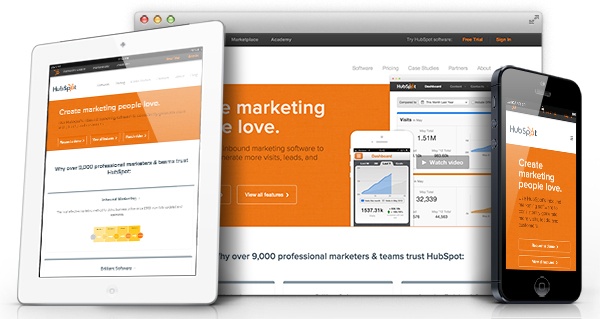Did you dodge Google's mobile penalty?
April 21, 2015 CNN Money announced "Mobilegeddon is upon us." The story highlighted changes in Google's search algorithm which were designed to deliver mobile friendly website results to users who were searching from mobile devices. In other words, knowing that a user was on a mobile device, Google's objective was to provide relevant results that could also be reasonably viewed from the device being used.
Makes sense. And as also noted in the article, everyone was warned.
Some companies responded proactively. Some were advised to build mobile sites - a solution which is expensive, cumbersome and outdated. Others switched to "responsive" templates in their CMS (content management system - basically the tool they use to publish their websites.) These were an effective first step - and responsive design is a great solution to the variety of devices which users use to view webs content.
Oddly, however, many companies in the industrial manufacturing space still have outdated sites which are costing them B2B marketing results. These same companies often invest in content marketing and extensive SEO and paid ad campaigns to improve results 5 or 10%. Yet they ignore the 30-50% of mobile searches which they'll never appear for because their sites aren't mobile friendly.
Crazy, huh? All because a website is only built every 7 years and it's not a core asset to invest in to continuously upgrade. Right.....
 What about the ongoing user penalty?
What about the ongoing user penalty?
But Google is only one threshold. Assuming a company appears in searches from mobile devices, and has carefully created page titles, meta descriptions and URLs to encourage clicks on their listings, they still have to satisfy users that hit their site.
Responsive design doesn't do that. All it does is ensure that things are rendered in a readable way.
But users aren't looking for something that's "readable." That's a baseline expectation. They expect an experience that's intuitive and easy to navigate. And that is an entirely different standard, and one which lots of B2B marketing fails to meet.
And even if Google technically clears your site, users will be unforgiving as soon as they visit.
Here are some common examples of design failures that arise from simple responsive design:
- Image at the top is scaled, but fills the entire screen - the visitor arrives with no easy way to gauge what the site is about
- Menu points cover most of the smartphone screen held vertically, and all of it held horizontally - again, the visitor sees readable size font and buttons that are large enough to manipulate on a smart phone (a couple of Google's criteria) but they have NO idea of whether they've arrived at a site which will answer their question or not
- Content is jumbled - are the images appearing at the right points amidst text to compliment the message as intended? Or do they appear as unrelated and disjointed interruptions to scrolling?
- Message is distorted - some pages tell a story, leading visitors through a discovery journey. Often responsive design will render that appropriate for the screen - and in doing so disrupt the order and flow
- Forms extend beyond the screen - 5 fields in a form is a commonly accepted threshold. More than that and many users will hesitate to submit forms, at least for early buying stage offers. A five field form on a desktop is a couple inches tall on the screen - and put a couple inches on a smartphone screen and it suddenly looks like a project!
- Who knows how tables will appear....
What is mobile optimization
Mobile optimization is the practice of creating sites which will not only appear readable on various screens, but deliver a fluid user experience.
Images must be sized and properly located. Text and other elements must be displayed in a contextually appropriate way - even as the way in which they're rendered is changed by the responsive CMS. Forms must be acceptable. File sizes must respect mobile bandwidth to ensure appropriate page load speeds. And navigation must not only be in some mobile friendly format, but actually compliment the site and facilitate browsing and quickly finding key information - not just something that technically works.
These are standards which are rarely considered and almost never met in B2B marketing among industrial manufacturing companies. And that's tragic, because more and more are investing in content to ensure they appear in searches, get clicked and create value for visitors - but then they're making it too hard for visitors to appreciate the value they offer. And that means they're failing at their primary website goal - converting traffic into leads.
Here are the key things to remember:
- It's important for your visitors - not just for Google
- Optimization is more than responsive - it's about create the optimal site experience regardless of whether your visitor is on a desktop, laptop, vertical or horizontal tablet or vertical or horizontal smartphone
- Designers will often overlook the business implications as they focus on aesthetics
- Marketers will often build everything around desktop views
- Rising generations of technical buyers, engineers and industrial managers instinctively use mobile devices for much of their work - they represent a huge portion of your traffic
Rethinking the role and nature of the industrial marketing website
The failure to optimize for mobile (or even to provide a sub-optimal but responsive experience) is indicative of the conflicted way in which industrial companies view their sites. Unwelcome expense (like industrial manufacturers tend to view every B2B marketing expense!) and big hassle (approving all the content, etc.) are common reactions - and the product is often a static, boring, mediocre brochure.
But that's changing. Websites are now built and revised continuously - even to the point that they may be operating expenses rather than capital projects. Buyer behaviors change often, and dramatically. Sites need to morph in parallel for companies to retain hard earned domain authority and provide engaging visitor experience. Mike Lieberman (@Mike2Marketing) recently went as far as to propose you see your website evolution as a new and improved site EVERY MONTH!
So the comparison of responsive to optimized website design is a reasonable question - but it opens a larger debate that industrial manufacturing companies need to have about the core of their B2B marketing - their website.
Want to learn more about how marketing automation can enhance the site user experience and help your sales team win more deals? Download my free guide here.




